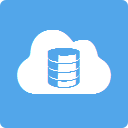10 Critical Requirements for Environmental Cloud Applications: No. 1: True Multi-tenancy
There is considerable debate in the marketplace about whether organizations should know or even care about multi-tenancy. The truth is that multi-tenancy is the only proven SaaS delivery architecture that eliminates many of the problems created by the traditional software licensing and upgrade model, so it is extremely valuable to know whether a provider uses a multi-tenant architecture. A provider should be able to answer this question with a simple “yes” or “no,” and prove its answer.
Multi-tenancy ensures that every customer is on the same version of the software. As a result, no customer is left behind when the software is updated to include new features and innovations. A single software version also creates an unprecedented sense of community where customers and partners share knowledge, resources, and learning. Smart managers work with their peers and learn from them and what they are doing. Multi-tenancy offers distinct cost benefits over traditional, single-tenant software hosting. A multi-tenant SaaS provider’s resources are focused on maintaining a single, current version of the application, rather than spread out in an attempt to support multiple software versions for customers. If a provider isn’t using multi-tenancy, it may be hosting thousands of single-tenant customer implementations. Trying to maintain that is too costly for the vendor, and those costs, sooner or later, become the customers’ costs.
Multi-tenancy requires a new architectural approach. You have to develop applications from the ground up for multi-tenancy; otherwise, extensive work is required of the vendor to alter the on-premises application and underlying database for multi-tenancy, resulting in an even more complex, and potentially high-maintenance, application.



